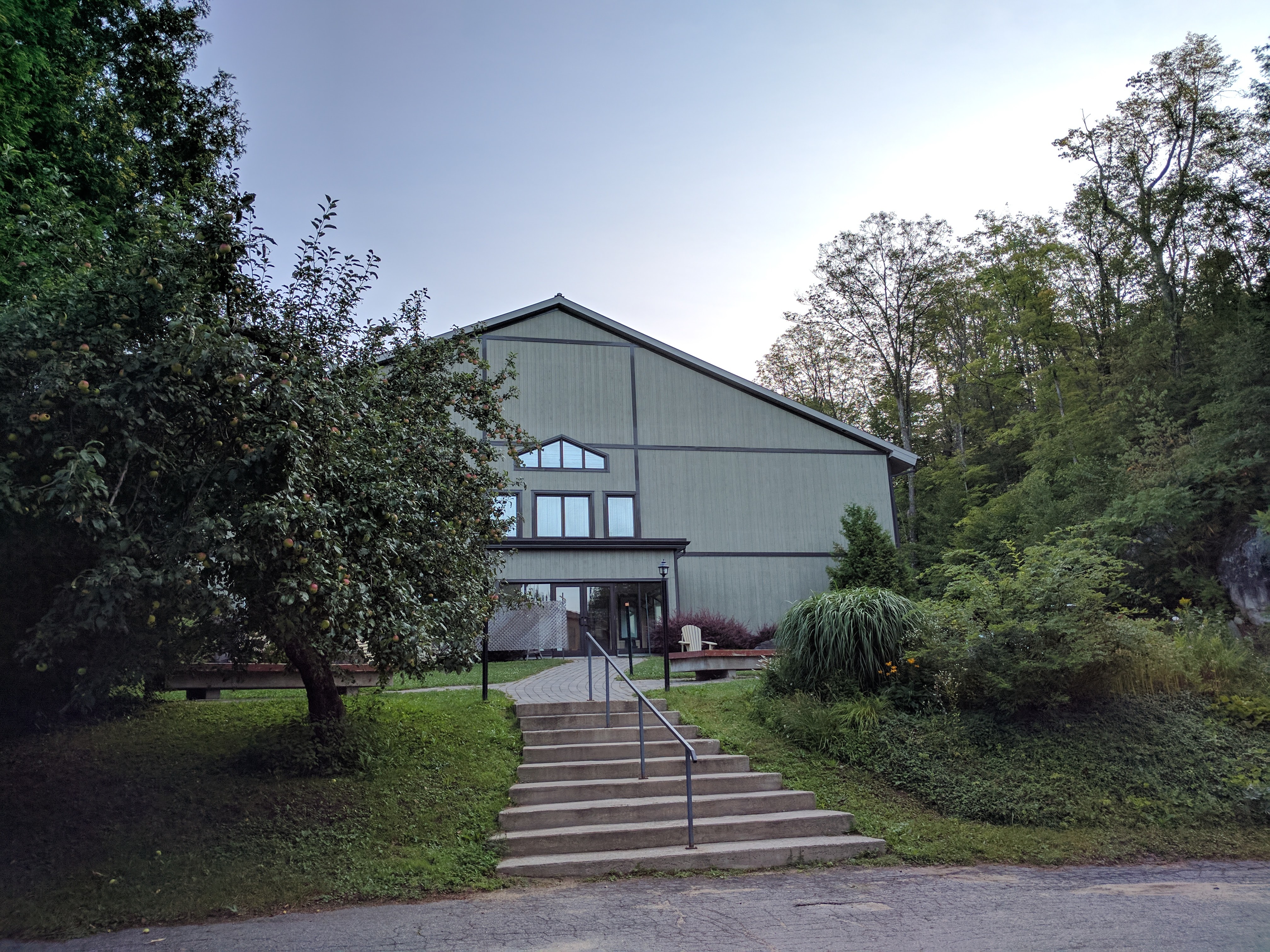
Several weeks ago I sat a 10-day Vipassana meditation retreat at the Dhamma Suttama in Montebello, Québec. In an explicitly secular setting, a team of volunteer teachers demonstrated to around 100 of us students the basics of a meditation technique recovered directly from the teachings of the Buddha.1 These 10 days were excruciating – painful both physically and mentally. But out of the pain and maddening boredom emerged an inner stillness and peace I had never felt before.
I could write a lot more about my personal experience at the retreat. I could document how days of sitting in silence brought about such heightened sensory perception that I felt I had acquired superpowers. I could recall my dreams during those 10 days, more vivid and bizarre than I had ever experienced. Unsurprisingly, there is already plenty of writing like this all over the Internet. And I suggest you read none of it.
Meditation is fundamentally a solitary practice. The mission, after all, is to discover a new way to see the world through your own eyes. This can’t be accomplished by reading blog posts or books, or by discussing your practice with teachers or fellow students. You can only find your own way.
I’ve been reading other people’s accounts of Vipassana retreats after returning from my own, and frankly, a lot of this content underserves the experience. It’s not that there is a dearth of skilled writers discussing the topic. It’s simply that extended meditation yields effects that really can’t be conveyed through language, no matter the skill of the writer.
I can sympathize if that last sentence sounds a little loosey-goosey to you. My analytical-philosopher-mind of early 2017 would have thought the same. But try to think of meditation as a method of practicing a skill – the skill of seeing clearly into your own, first-person experience.2 It’s a skill just like improvisational jazz, or cooking, or racecar driving. If you ask a master of any of these skills to describe what it’s like to engage their mastery, you might be able to get a detailed description of the sights, sounds, tastes, smells, and thoughts involved in the experience. But hearing such a description is not the same thing as having these feelings first-hand, no matter how lengthy or beautifully worded.
The special thing about meditation as skill practice, then, is that the skill we are practicing is necessary for grasping the original lessons of the Buddha. It’s quite fun to study Buddhist notions of suffering, impermanence, and “not-self” at an intellectual level. But we can’t fully grasp these concepts until we directly experience their effects — until we sit down and listen.
So go sit down and listen for yourself! Retreats organized by the international Dhamma organization are free of charge.
But am I prepared?
Good question. I was anxiously asking this question as my own retreat approached. By this point, I had a daily meditation practice but had never participated in any retreat longer than several hours.
You are not prepared if you’re like I was. But this is no reason at all to despair. Even those students returning for their second or third retreat feel they are not physically or mentally prepared for the experience. I suppose the only way to really be prepared for this sort of experience is to achieve enlightenment. Unless you think can accomplish that before your trip, I think you ought to settle for less.
That being said, I would like to end the post with some actual advice on how to be ready for your own retreat.
Physical preparation
First: resign yourself to the fact that you are not—and will not be—physically prepared. Experienced meditators and newbies alike complain of extreme physical pain during the one-hour sits over the ten days. You are no different.
Having said that, here are some basic items I think it’d be wise to follow in order to minimize your risk of injury.
- Research proper meditation posture. There are lots of ways to sit in meditation, and you need to find one (or two, or more) which work well for your body. Whichever position you pick, make sure that it is safe! Your best bet is probably to visit a local meditation group and rely on the teacher’s advice here. An unsafe posture can do real damage to your muscles, bones, and nerves. Be safe!
- Sit! Establish a daily meditation practice. You can sit for 5 minutes or 50 minutes at first – just make sure you keep it up every day. As your retreat approaches, begin increasing your daily sit time. You should be comfortable sitting in some position – whichever works for you – for at least 20 or 30 minutes.
Mental preparation
Again: resign yourself to the fact that you are not—and will not be—mentally prepared. But you can do your best with the following:
- Remove stressors. Try to leave for your retreat on good terms with your family, friends, and colleagues. Finish big work projects or life projects. Pay off your bills.
- Keep a journal. Write about your daily experience and think about what you want to get out of your meditation practice.
- Share your journey. Tell your friends and family about your plans and let them interrogate you. Some will be surprised, some won’t understand at all, and some might want to come with you. You can use your social network to help work out for yourself what the retreat is for in the first place.
It’s up to you to begin the exploration. Good luck!

-
Wikipedia has fairly good coverage on the Vipassana movement and its relation to Buddhism. We were given rather orthodox lessons in the tradition of Theravāda Buddhism, with lectures drawing almost entirely on content from the Pāli Canon. ↩
-
In Pali, vipassana actually means something like “seeing into [your own experience].” Those interested can read an entire article on the meaning of vipassana. ↩